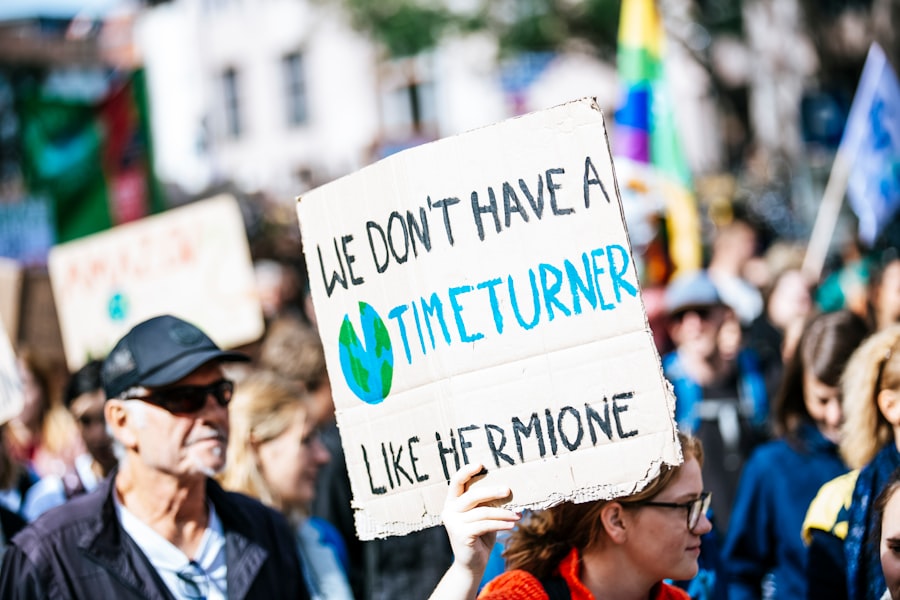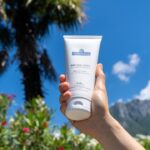Aftercare is a crucial aspect of any cosmetic or dermatological treatment, and understanding its significance can greatly enhance your results. When you undergo a procedure, whether it’s a chemical peel, laser treatment, or microdermabrasion, your skin is left in a sensitive state. This sensitivity makes it imperative to follow a structured aftercare routine to ensure optimal healing and to minimize the risk of complications.
By prioritizing aftercare, you not only protect your investment in your appearance but also promote the health and longevity of your skin. Moreover, aftercare is not just about preventing negative outcomes; it’s also about maximizing the benefits of the treatment you received. Proper aftercare can help to enhance the results, allowing you to enjoy smoother, clearer, and more radiant skin.
When you take the time to care for your skin post-treatment, you are essentially giving it the best chance to recover and thrive. This understanding can empower you to take an active role in your skincare journey, ensuring that you achieve the results you desire while maintaining the health of your skin.
Key Takeaways
- Aftercare is crucial for the success of any skin treatment, as it helps in the healing process and ensures long-lasting results.
- Managing discomfort and redness is important post-treatment, and can be achieved through the use of recommended products and techniques.
- Protecting the skin from sun exposure is essential to prevent damage and maintain the results of the treatment.
- Harsh skincare products should be avoided to prevent irritation and potential damage to the treated area.
- Moisturizing and hydrating the skin is key to maintaining its health and promoting the healing process after a treatment.
Managing Discomfort and Redness
Experiencing discomfort and redness after a treatment is common, but managing these symptoms effectively can make a significant difference in your recovery process. You may find that applying a cool compress to the treated area can provide immediate relief from any heat or irritation. This simple technique can help soothe your skin and reduce inflammation, making you feel more comfortable as you navigate the healing process.
Additionally, over-the-counter pain relief medications can be beneficial if you experience significant discomfort; however, it’s always wise to consult with your healthcare provider before taking any medication. In addition to physical remedies, it’s essential to listen to your body and give yourself time to heal. Avoiding strenuous activities or environments that may exacerbate redness or discomfort is crucial during this period.
For instance, engaging in intense workouts or exposing your skin to extreme temperatures can lead to increased irritation. Instead, focus on gentle activities that promote relaxation and allow your skin to recover without added stress. By being mindful of your body’s signals and taking proactive steps to manage discomfort, you can create a more pleasant post-treatment experience.
Protecting the Skin from Sun Exposure

One of the most critical aspects of aftercare is protecting your skin from sun exposure. After undergoing a treatment, your skin may be more susceptible to damage from UV rays, which can lead to complications such as hyperpigmentation or prolonged redness. To safeguard your skin, it’s essential to apply a broad-spectrum sunscreen with an SPF of at least 30 every day, even on cloudy days.
This protective measure helps shield your skin from harmful rays and supports the healing process. In addition to sunscreen, wearing protective clothing and seeking shade during peak sun hours can further enhance your skin’s defense against UV exposure. Consider incorporating wide-brimmed hats and sunglasses into your wardrobe when spending time outdoors.
These simple additions not only provide physical protection but also serve as stylish accessories that can elevate your overall look. By taking these precautions seriously, you are actively contributing to the health of your skin and ensuring that the results of your treatment are preserved for the long term.
Avoiding Harsh Skincare Products
| Skincare Product | Potential Harsh Ingredients | Alternative |
|---|---|---|
| Foaming Cleanser | Sodium lauryl sulfate | Cream or gel cleanser |
| Exfoliating Scrub | Microbeads | Chemical exfoliant |
| Toner | Alcohol | Alcohol-free toner |
| Acne Treatment | Benzoyl peroxide | Salicylic acid |
After a treatment, your skin may be more sensitive than usual, making it essential to avoid harsh skincare products that could cause irritation or disrupt the healing process. Ingredients such as alcohol, fragrances, and exfoliating agents can exacerbate redness and discomfort, so it’s wise to steer clear of these products for at least a few weeks post-treatment. Instead, opt for gentle cleansers and soothing moisturizers that are specifically formulated for sensitive skin.
These products will help maintain your skin’s barrier while promoting healing. Additionally, this period presents an excellent opportunity to reassess your skincare routine and make adjustments that prioritize gentleness and hydration.
By being mindful of what you apply to your face during this time, you can create an environment conducive to healing while also setting the stage for healthier skin in the future.
Moisturizing and Hydrating the Skin
Keeping your skin well-moisturized and hydrated is vital for optimal recovery after any treatment. When your skin is healing, it may become dry or flaky, which can hinder the recovery process and affect the overall appearance of your complexion. To combat this, invest in a high-quality moisturizer that suits your skin type and provides ample hydration.
Look for products containing hyaluronic acid or glycerin, as these ingredients are known for their ability to attract moisture and keep the skin plump. In addition to using a moisturizer, consider incorporating hydrating serums into your routine. These lightweight formulations can penetrate deeper layers of the skin, providing an extra boost of hydration where it’s needed most.
Remember to apply these products consistently throughout the day, especially after cleansing or exposure to environmental stressors. By prioritizing hydration during this critical time, you will not only support your skin’s recovery but also enhance its overall texture and appearance.
Keeping the Treated Area Clean
Gentle Cleansing
Gently cleansing the area with a mild cleanser twice daily will help remove impurities without causing irritation. Avoid scrubbing or using abrasive materials on the treated skin; instead, use your fingertips to apply the cleanser softly.
Preserving Skin Integrity
This gentle approach will help preserve the integrity of your skin while ensuring that it remains free from dirt and bacteria. In addition to regular cleansing, be mindful of how you touch your face during this time. Your hands carry bacteria that can lead to infections if they come into contact with open or healing skin.
Hand Hygiene
Make it a habit to wash your hands thoroughly before touching your face or applying any products. By keeping both your hands and the treated area clean, you are taking proactive steps toward ensuring a smooth recovery process.
Adhering to Post-Treatment Instructions
Following post-treatment instructions provided by your healthcare professional is essential for achieving the best possible results from your procedure. These guidelines are tailored specifically for you based on the treatment you received and your unique skin type. Whether it involves avoiding certain activities or using specific products, adhering to these instructions can significantly impact your recovery journey.
It’s also important to communicate openly with your provider if you have any questions or concerns about the aftercare process. They are there to support you and can offer valuable insights into how best to care for your skin during this time. By actively engaging in this dialogue and following their recommendations closely, you empower yourself to take control of your skincare journey while ensuring that you achieve optimal results.
Scheduling Follow-Up Appointments
Scheduling follow-up appointments is an integral part of maintaining the results of any cosmetic treatment. These visits allow your healthcare provider to assess how well your skin is healing and make any necessary adjustments to your aftercare routine. Additionally, follow-up appointments provide an opportunity for you to discuss any concerns or questions that may have arisen since your treatment.
Regular check-ins with your provider also help establish a long-term skincare plan tailored specifically for you. They can recommend additional treatments or products that may further enhance your results based on how your skin responds post-treatment. By prioritizing these follow-up appointments, you not only ensure that you are on track for optimal recovery but also demonstrate a commitment to maintaining healthy, beautiful skin in the long run.
In conclusion, understanding and implementing effective aftercare practices is essential for anyone undergoing cosmetic treatments. From managing discomfort and protecting against sun exposure to adhering strictly to post-treatment instructions and scheduling follow-ups, each step plays a vital role in achieving desired results while promoting overall skin health. By taking these measures seriously, you empower yourself on your skincare journey and set the stage for radiant results that last well beyond the initial treatment phase.
Aftercare for facial laser hair removal is crucial to ensure optimal results and minimize any potential side effects. One helpful resource for more information on this topic is the blog section of In Laser Hair Removal’s website. In their blog, they provide valuable tips and advice on how to properly care for your skin post-treatment to maintain smooth and hair-free results. For more in-depth information on aftercare for facial laser hair removal, check out their blog inlaserhairremoval.
com/blog/’>here.
FAQs
What is facial laser hair removal?
Facial laser hair removal is a cosmetic procedure that uses a laser to target and destroy hair follicles on the face, reducing or eliminating unwanted facial hair.
What is aftercare for facial laser hair removal?
Aftercare for facial laser hair removal typically involves keeping the treated area clean and protected from sun exposure, avoiding certain skincare products, and following any specific instructions provided by the treatment provider.
How should I care for my skin after facial laser hair removal?
After facial laser hair removal, it is important to keep the treated area clean and moisturized, avoid sun exposure, and refrain from using harsh skincare products or exfoliants for a period of time as recommended by the treatment provider.
Can I wear makeup after facial laser hair removal?
It is generally recommended to avoid wearing makeup immediately after facial laser hair removal to allow the skin to heal. Your treatment provider will provide specific guidance on when it is safe to resume wearing makeup.
Are there any specific products I should avoid after facial laser hair removal?
After facial laser hair removal, it is typically advised to avoid using harsh skincare products, exfoliants, and certain acne medications that could irritate the treated skin. Your treatment provider will provide specific recommendations for post-treatment skincare.
How long does it take for the skin to heal after facial laser hair removal?
The healing time after facial laser hair removal can vary depending on the individual and the specific treatment. It is important to follow the aftercare instructions provided by the treatment provider to promote proper healing and minimize the risk of complications.





